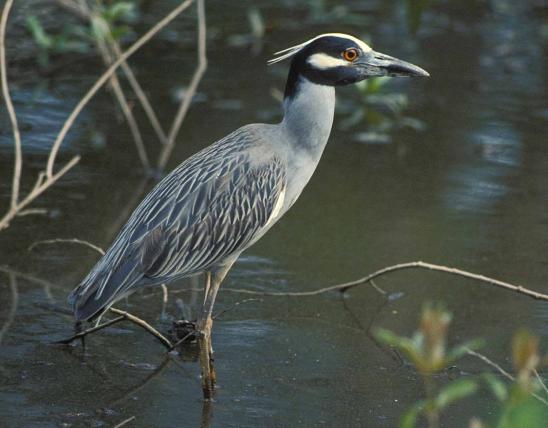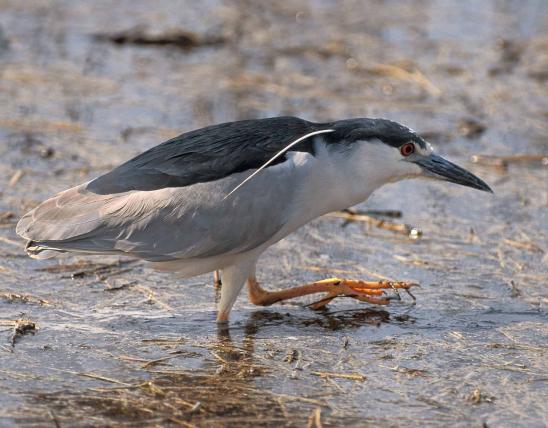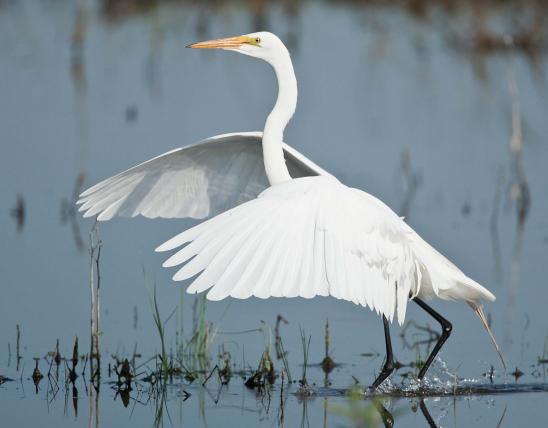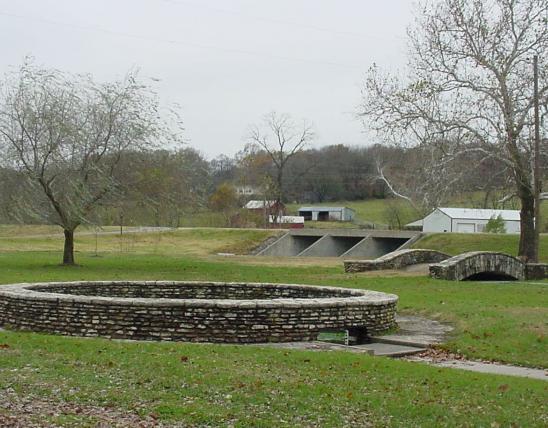
Great blue herons have a very large, slate-blue body, long legs, long, pointy bill and a slender, long neck. The head is white with a black, plumed eye line. The thighs are reddish or rusty and the lower legs dark. The bill is yellowish, and the pale breast feathers are long and plumelike. The voice is a low, harsh “gwock,” often heard in flight.
Length: 46 inches (tip of bill to tip of tail).

Statewide, near bodies of water.
Habitat and Conservation
Great blue herons are found in aquatic environments where they can wade and forage for prey. Water-quality issues affect them, as they are an important part of wetlands and open-water ecosystems.
Food
Herons forage in shallow pools, edges of lakes and similar areas for aquatic prey including frogs, small fish and many other animals that can be swallowed.
Status
Uncommon summer resident in nesting colonies statewide; common during migration and when young individuals are dispersing from breeding colonies. Uncommon winter resident where water is unfrozen.
Life Cycle
Herons gather in large nesting colonies near water and food. A colony can contain hundreds of bulky stick nests. Each pair of great blue herons typically lays 3–6 eggs, which are incubated for nearly a month. The chicks hatch one at a time, with the first to hatch growing more quickly than the others. It is important to stay far back from breeding colonies, since the birds and their chicks can suffer fatal accidents in their haste to escape.
Human Connections
These magnificent wading birds are enjoyed by bird watchers and others who witness their careful foraging and broad wing strokes as they take flight near water.
Ecosystem Connections
As top predators, great blue herons check populations of many aquatic and animals. Their eggs and chicks are frequently preyed upon by other predators, though not many animals hunt the adults.

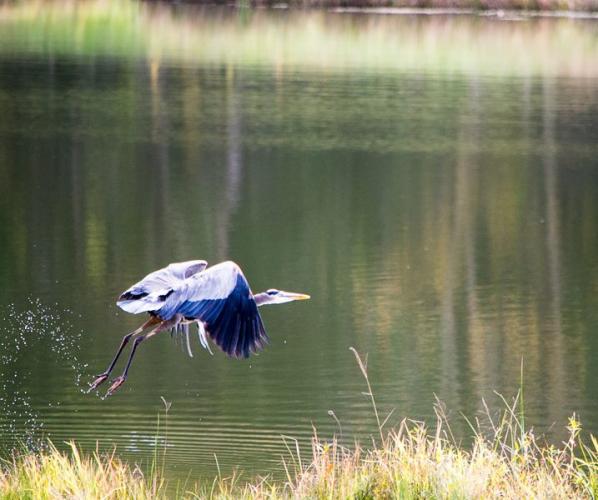

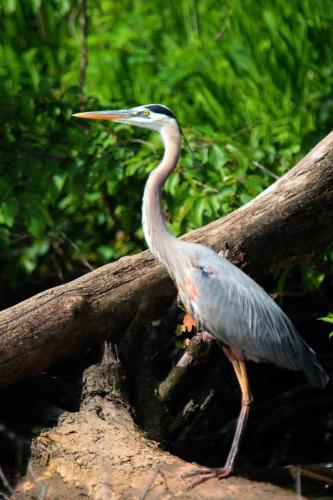








Where to See Species
About 350 species of birds are likely to be seen in Missouri, though nearly 400 have been recorded within our borders. Most people know a bird when they see one — it has feathers, wings, and a bill. Birds are warm-blooded, and most species can fly. Many migrate hundreds or thousands of miles. Birds lay hard-shelled eggs (often in a nest), and the parents care for the young. Many communicate with songs and calls.























